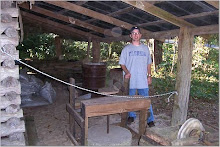In Historic Preservation: Collective Memory and Historical Identity Diane Barthel compares the preservation movements of Great Britain and the United States. In taking a comparative approach, Barthel shows the reader that the preservation taking place in Great Britain has largely aimed at preserving traditional values. While in the United States, the preservation process is much more dynamic and democratic, though also more permeated by commercialism. Barthel examines these differences in the preservation movements in the United States and Great Britain. It is important to understand that Barthel felt there were two different reasons for the preservation movement in these countries.
Throughout the book Barthel tries and provide the reader information on the effects historic preservation has on what types of things get preserved. While many people including myself believe that historic preservation is the best way to save history for future generations, Barthel provides information to the reader that shows in some circumstance historic preservation is not always the best way to go. Barthel provides the reader with information concerning the issues when historic preservation been misused. She tells of the cons of too much preservation. In Great Britain Barthel tells how many Churches have been allowed to remain open, even though there is no reason or justification for the Churches to remain open. Over-preservation has become a growing concern in both Great Britain and United States. When to many thing get preserved they tend to lose a bit of their importance. When learned in our last reading that people should preserve thing that are important to them. While this may be true if too many thing get preserved the less important things being preserved can also take away for more important artifacts.
An example of over-preservation I believe Barthel provides the reader is when she tells of the preservation of war artifacts and other memorable. She tells how the Civil War Battlefields have attracted people for many years and how these sites help to stimulate the economies of their surrounding areas. I know this to be true first hand from going over to St. Simons Island in Georgia. While not a Civil War battle field a major site for tourist on St. Simons Island besides the beach is the “Bloody Marsh”. The “Bloody Marsh” is where the Spanish were lured by James Oglethorpe to an open area in a marsh. Oglethorpe placed his men around the open field as the Spanish regrouped, Oglethorpe left his men to try and rally more support. Soon afterwards a much larger Spanish force would emerge and engaged Oglethorpe's men. The colonists battled the much larger and superior Spanish army and forced the Spanish into a haphazard retreat. This is what is now known as the battle of Bloody Marsh. The state of Georgia has turned this area into nothing more than a tourist trap. What was once a beautiful historic site in order to preserve the history of the “Bloody Marsh” Georgia has destroyed the true history of the marsh in my opinion because they have made it into a story with recreated artifacts?
So what is that needs to be preserved and how should it be preserved? Barthel tells how social history has changed the meaning of what is considered an artifact. If we take what we have learned an artifact is anything that is important to another person that they feel needs to be preserved. Barthel provides the example of a package of cookies from the Gulf War used in a museum exhibit in the United Stated. She tells that before the new social history movement occurred a package of cookies would not have been used as a historic artifact in a museum exhibit. She also tells how the British preserved artifact with them same historical significance with their use of plastic cups in museum exhibits. I could see her argument but these items are what make an exhibit unique in my opinion and if these are not preserved how will they be remembered? Barthel does show concern in the over-preservation of artifacts but she also has concern for the problems that can arise from the lack of historic preservation.
This is a great book though in my opinion is difficult to grasp and get into because it is so detailed. This book contains a lot of information I found difficult to comprehend because of the academic nature of the book. She has done an extensive study in historic preservation by studying the collective movement of historic preservation and how these movement span across and among nations.
The Final Frontier?
17 years ago

No comments:
Post a Comment